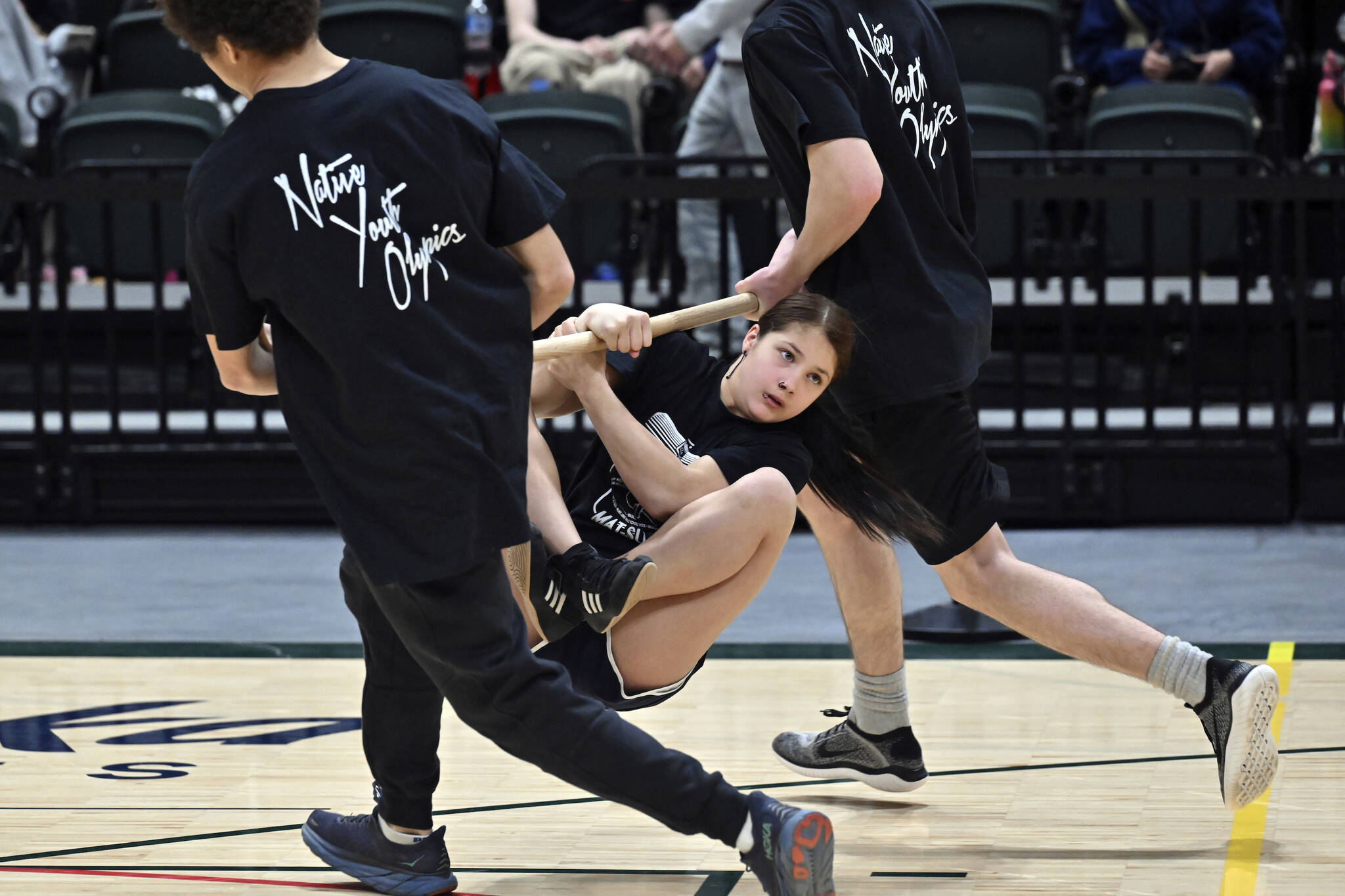The athletes filling a huge gym in Anchorage were ready to compete, cheering and stomping and high-fiving each other as they lined up for the chance to claim the state’s top prize in their events.
But these teenagers were at the Native Youth Olympics, a statewide competition that attracts hundreds of Alaska Native athletes each year and pays tribute to the skills and techniques used by their ancestors to survive in the harsh polar climate.
Events at the competition that wraps up Saturday include a stick pull, meant to mimic holding onto a slippery seal as it fights to return to the water, and a modified, four-step broad jump that approximates leaping across ice floes on the frozen ocean.
For generations, Alaska Natives played these games to develop the skills they needed to become successful hunters — and survive — in an unforgiving climate.
Now, today’s youth play “to help preserve our culture, our heritage, and to teach our youth how difficult life used to be and to share our culture with everyone around us who wants to know more about our people,” said Nicole Johnson, the head official for the event and one of Alaska’s most decorated Native athletes.
Johnson herself has won over 100 medals at Native Olympic competitions and for 29 years held the world record in the two-foot high kick, an event where athletes jump with both feet, kick a ball while keeping both feet even, and then land on both feet. Her record of 6-feet, 6-inches was broken in 2014.
For the “seal hop,” a popular event on Saturday, athletes get into a push-up or plank position and shuffle across the floor on their knuckles — the same stealthy crawl their ancestors used during a hunt to sneak up on unsuspecting seals napping on the ice.
“And when they got close enough to the seal, they would grab their harpoon and get the seal,” said Johnson, an Inupiaq originally from Nome.
Colton Paul had the crowd clapping and stomping their feet. Last year, he set a world record in the scissors broad jump with a mark of 38 feet, 7 inches when competing for Mount Edgecumbe High School, a boarding school in Sitka. The jump requires power and balance, and includes four specific stylized leaps that mimic hop-scotching across floating ice chunks to navigate a frozen river or ocean.
The Yupik athlete from the western Alaska village of Kipnuk can no longer compete because he’s graduated, but he performed for the crowd on Friday, and jumped 38 feet, 9 inches.
He said Native Youth Olympics is the only sport for which he’s had a passion.
“Doing the sports has really made me had a sense of ‘My ancestors did this’ and I’m doing what they did for survival,” said Paul, who is now 19. “It’s just something fun to do.”
Awaluk Nichols has been taking part in Native Youth Olympics for most of her childhood. The events give her a chance to explore her Inupiaq heritage, something she feels is slowly fading away from Nome, a Bering Sea coastal community.
“It helps me a lot to just connect with my friends and my culture, and it just means a lot to me that we still have it,” said the high school junior, who listed her best event as the one-foot high kick.
Some events are as much of a mental test as a physical one. In one competition called the “wrist carry,” two teammates hold a stick at each end, while a third person hangs from the dowel by their wrist, legs curled up like a sloth, as their teammates run around an oval track.
The goal is to see who can hang onto the stick the longest without falling or touching the ground. The event builds strength, endurance and teamwork, and emulates the traits people of the north needed when they lived a nomadic lifestyle and had to carry heavy loads, organizers said.
Nichols said her family and some others still participate in some Native traditions, like hunting and subsisting off the land like their ancestors, but competing in the youth games “makes you feel really connected with them,” she said.
“Just knowing that I’m part of what used to be — it makes me happy,” she said.

